Julie Lam discusses her life as an artist, activist and citizen of the world, and how she’s been using her writing skills to advocate for mask wearing and safety precautions to protect against COVID-19. Read on to learn about her efforts to educate, her writing journey, and her sense of belonging and purpose that developed during the pandemic.
JULIE LAM – FICTION, JUNE 2019
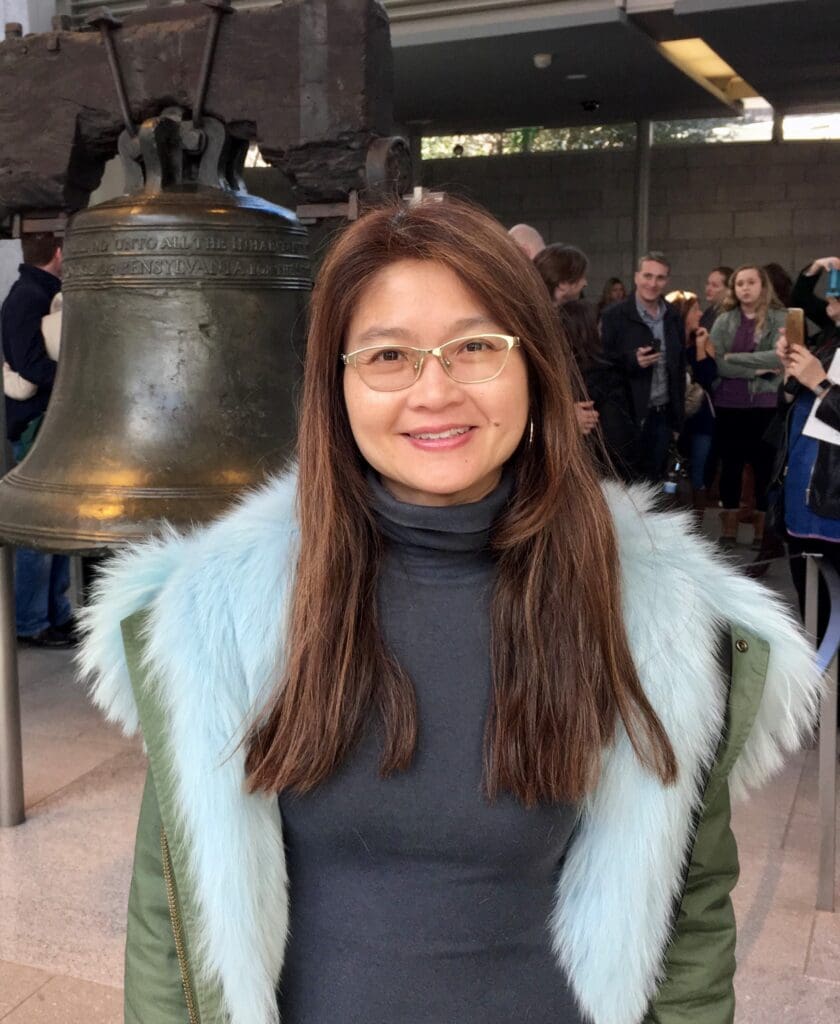
JULIE LAM is a New York based painter, photographer, designer and writer. Lam attended Hong Kong Polytechnic, in Hong Kong, and Massachusetts College of Art, in Boston, to develop a foundation in art and design. Lam also earned an MFA in Creative Writing from Lesley University, in Cambridge, MA. The Surrogate, one of her short plays, won the Audience Award of The Writer’s Voice Ten Minute Play Festival, in 2017. Lam’s urgent effort to promote mask wearing during the COVID pandemic has been curated by Medium (x , x, x), and published in the New York Voice (x , x, x). Julie’s passion to affect change on the individual level stems from her desire to stand with the marginalized and advocate social reform. Prior to pursuing writing, Lam worked as a creative director at several Boston and Manhattan advertising agencies where she created memorable campaigns for Fortune 500 companies including American Express, Motorola and Time Warner. Her campaign launching TD Ameritrade has been taught in Harvard’s marketing curriculum, and was notably the highlight of a video spoof at President Clinton’s final White House Press Correspondents Dinner. Julie Lam’s work has received industry recognition and many awards, including The One Show, the Emmy, D&AD, and The London International Advertising Award.
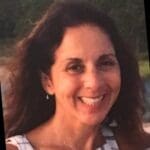
Interviewed by
Leah Glennon
What is the driving factor that gets you out of bed to write? What do you enjoy most about your writing?
I write when I feel pain. I write when I need to fight for something. Humans’ basic right. Racial injustice. Unregulated spread of misinformation. Wars against each other. Wars against nature. When the pain gets serious and personal, I write even in my sleep.
In the spring of 2020, I felt a sense of urgency to support the frontliners who put their lives on the line for our country against a deadly virus that has destroyed millions of lives in the U.S. When my home New York City took Wuhan’s place as the epicenter of the COVID-19 pandemic, nothing could stop me from giving up everything to dive into the fight against the rampant spread of hurtful misinformation against life-saving mitigation tools. When I said everything, that includes my responsibility as a mom and wife… as well as a novel I started 9 years ago.
My heart was agitated with pain when I initiated MaskTogetherAmerica, an anti-misinformation platform on Facebook and Instagram.
Sirens were blaring through the night in the desolate city. Near our home, a hospital set up tents in Central Park to treat COVID patients. Deceased were loaded onto trailers. Unclaimed bodies were mass buried on Hart Island. Schools and stores left abandoned overnight when the lockdown whistle was blown. You could stand in the middle of the road and scream in the middle of the day and you wouldn’t get hit by a car. We held our breath as we shared the air with hundreds of residents in our building, as we soon found out that the workers were catching the deadly virus. One by one, they were missing work. Every day we pushed our faces against the windows before the sunset, banging pots and pans frontline workers couldn’t hear or care.
With a grassroots campaign, I envisioned people rallying each other to stay COVID SMART together, though I didn’t know how to make that happen. I didn’t even have an Instagram account. I was scared of the unknown but I couldn’t just sit there.
People were losing their parents. Michael and Duncan lost their father. They were friends of my son. The boys were swimmers of a competitive team I volunteered for as swim mom and photographer. Their father, Dr. Berry Webber, was a surgeon at Mt. Sinai Hospital in Queens. It was traumatizing to learn that they weren’t even given a chance to say goodbye to their dad.
I wanted to protect the children in our country from losing their parents.
I published my first story about the pandemic on March 5, 2020. After a few more stories, unsatisfied of the minimal reach, I turned to social media.
At first, I focused on stopping random strangers on the street to photograph them and sharing masked portraits. Trained as an artist, I believed in the power of art. My husband and my son thought I had gone crazy, even though they supported me mentally and physically, from taking care of house chores to accompanying me on some photoshoots.
When the campaign gained traction, I started to invite followers and advocates to collaborate. I interviewed COVID-patients and shared their testimonials in writing and videos. Getting bolder, I also wrote annotations of medical studies, giving people the glaring reasons to take precautions.
“You are the light for us in the dark.” Once a COVID survivor wrote me after I interviewed her and shared her battle with lingering symptoms. MaskTogetherAmerica’s platform houses voices of victims, as well as people who stand with them.
Some people simply cannot develop immunity against the virus. It’s genetic. An infectious disease doctor explained. Massive virus-induced inflammation triggers multi-organ damage. It is heartbreaking to see how this virus has disabled my friends whom I met in this journey. Whenever I feel like giving up, I would look back at all the blinking eyes in this dark tunnel that still has no end in sight.
Do you have any bad writing habits you’ve picked up over the years?
My urgency to raise awareness has often led to mistakes. My tip for all writers is to take breaks… go workout, go shopping, come back and read it again when your head is less tired. Your reputation as a writer is always on the line. The good thing about self-publishing on social media platforms or on Medium is that I can always edit and remove the mistakes after publishing the piece. That’s not the case with a submission to a publisher.
I have a tendency to overwrite. It’s dreadful to cut “the-not-exactly-needed” out. Publishing on social media turned me into a flash non-fiction writer. The daily exercise gives me a chance to practice composing within the character count limit set by Instagram. With only 2200 characters allowed in a piece, I have to collapse and compress storylines, and focus on the most unwonted and elusive details, and the voices of my characters. My ability to reduce patients’ year-long suffering down to 2200 strong and telling characters is something I earned from this volunteer work.
What or who were some of your earliest inspirations in writing?
My earliest inspiration came from “Life Stories” a writing workshop taught by Patty Dann, the author of seven books including Mermaids, a novel that was made into a movie, starring Cher, Winona Ryder and Christina Ricci.

Patty’s class met at the West Side YMCA by the Central Park. My classmates were mostly retirees, grandmas, educated women who have been through the uncountable ebb and flow of life. Their life-stories involved escaping the Holocaust, surviving the World War, rationing during the Great Depression, fighting for their rights to be educated and respected, fighting to keep a career… and grieving for their loss.
In a basement classroom that had a noisy air-conditioner and windows that we couldn’t open, we read out loud and listened to each other’s stories once a week.
“Write about socks, or anything that has to do with socks or whatever you want to write in ten minutes.” Patty always started her class with a ten-minute exercise. We wrote about a different object every time. Ten of us would come up with ten distinctively different stories about the same subject.
While I wrote about my brother’s dirty socks I could never remove the black stain from on the heels, someone else would share her story about learning to knit wool socks to warm the soldiers fighting abroad.
Sitting around a cluster of small tables we pushed together to form a big one, we gave each speaker our full attention, so we wouldn’t miss those tears being wiped away— as memories got awakened —so we could see the face of that child, whose father had his nose reshaped to evade the Nazi’s capture, now covered with wrinkles — so we could get settled, lost and unsettled in a commune governed by a self-anointed male leader — until the time machine returned to the present.
Patty used to set an age limit to her memoir writing class. Only 60 years and older could enjoy this soul-healing ride. When I joined, my son was an elementary school student. Patty had just started to accept young students, so I lucked out. I took the class because I needed an outlet. I just gave up my career. My child, now in college, was bullied by his teachers and classmates.
I used to get really nervous about reading out loud. I still am. I often wail as I got emotional. One of my classmates would always offer to finish reading my story for me. Eventually, I got more comfortable. I even read on the stage to represent Patty’s class.
Responses from Patty and the class to my unpolished work, whether they were labored or hastily scrambled up, were always encouraging.
“Type them up, you never know when you’ll need them,” Patty always said.
It was Patty who recommended that I apply to Lesley’s MFA low-residency program, after I had studied with her for 6 years. She is the reason why I had over a thousand pages of precious memories preserved.
What is something that tends to get in the way of your writing and how do you overcome it?
Distractions from everything in the world. I don’t know how to shut out my obsession of checking the social media accounts, or to resist replying to comments or blocking those bots and trolls that leave clown and sheep and poop emojis, all kinds of attacks on my posts. It is difficult to ignore their vehement denial of the existence of the pandemic.
For you, what was the most valuable part of the Lesley MFA program that helped shape your writing career?
At Lesley MFA program, under the guidance of a group of talented and tough faculty, with A.J. Verdelle and Tony Eprile as my mentors, I felt taller when I graduated. It wasn’t easy to unlearn. I spent 3 years doing just that.
You get better through deep reading, annotating the craft, writing daily, writing with urgency, rewriting under pressure… getting critiques, getting frustrated with the demands, starting over and pushing until you reach somewhere. The pass you will earn is eminently precious when it is damn hard to earn it.
Lesley’s MFA program also shows me that boundaries don’t exist in creativity. After I took my first 10-minute playwriting class with Robbi D’ Allessandro, I fell in love with playwriting. Under her encouragement, I kept going. Studying with three awarding winning playwrights, William Prenetta and Lisa Grissom, besides Robbi helped me discover the joy in exploring a genre outside of my major. The Surrogate, one of my short plays, won the Audience Award of The Writer’s Voice 10-Minute Play Festival, in 2017. It was fun to see the words come alive on a stage.
What is a piece of writing or publishing advice you’ve learned since graduation that you think others should know?
Write what you really care about. Follow your heart. Words can’t be forced out of your mind.
Tell us a fact about yourself that doesn’t have to do with writing.
“Proud Immigrant” – I painted those words on my mortarboard for the walk when I completed the MFA program. Why? It wasn’t because of pride. I was having an identity crisis. It’s kind of strange to look back at what I have shared with The New York Times writer Lela Moore, who was super sweet to include my mortarboard and my story in her article: Wearing Their Hearts on Their Graduation Caps
In 1987, I moved to America for freedom, leaving behind my family in Hong Kong, a city that was once a British colony abandoned by the U.K. government. Though three decades had passed, I should have settled into my new country, I wasn’t able to develop a sense of belonging through the winding journey. Then the pandemic changed that.
The pandemic gave me an opportunity to serve my country.
The creation of MaskTogetherAmerica is a voluntary act. I see it as a civic duty. I took a course taught by Cornell University to become a certified NY State Citizen Public Health Leader. For over 2 years, I hunkered down, using my creativity to support public health.
“Mommy’s got this!” I told my son at the airport, after dropping him off to start college in 2020. I kept my promise that I wouldn’t give up. Two years have gone by like a whirlwind. Losing two friends to the virus and watching over a dozen of them being disabled by it, I needed nothing more to fuel my fighting spirit. I was determined to help people learn the truth about the life-saving preventive tools.
Who said that we can’t flood the social media with love and good values by sharing educational content? Who said that we can’t detoxicate the environment by shifting the culture entirely? Amazon was originally just a man’s dream to sell books online.
Through partnering and supporting other public health organizations, MaskTogetherAmerica’s content reaches hundreds of thousands of people each month, supported by followers in the thousands. Collaborating with other like-minded Americans since March 2020, I finally feel settled today, not as an immigrant, but just a mom, a wife, a New Yorker and a patriotic American.
What are you working on now?
I have published 7 pieces about the pandemic on Medium. Among these articles and stories, New York Mojo, published in New York Voice is my favorite. This short story captures my genuine desire to reach out to others and how much all these new friendships mean to me.
I do have a new piece I would like to share. Out of desperation, hoping to stop the removal of mask order for public transportation, I shared my personal struggle in this newly published story.
On March 1, 2022, I was invited to cover a food and mask distribution in East Harlem. Multiple non-profit organizations including the city’s public health agency took part in distributing free surgical masks and N95 masks along with fresh produce to the underserved community. That night, lo and behold, President Biden announced that we can once again remove our masks in the U.S., speaking in front of a room full of maskless politicians at the State of the Union. The CDC’s indoor masking recommendation was still in place at that time.
The conflicting message was impossible to ignore. Science tells us that we must stay the course until the end. Then just two days later in Florida, Gov. DeSantis bullied a group of high school students to remove their masks, publicly sabotaged a critical mitigation measure that protects the vulnerable population, further damaging people’s trust for health advisories.
I had sworn to keep MaskTogetherAmerica apolitical, until I saw the faces of these children being bullied by a powerful anti-vaccines-and-masks politician. The child who couldn’t take the pressure and removed his mask, had worn it to protect his immunocompromised mother. He reminded me of my own son.
Even though modern transportation is built with proper ventilation and filtration systems, Dr. Lindsey Marr, expert on airborne disease, warned that universal masking is still necessary when lots of people are in each other’s face and sharing the air.
I wrote a letter to urge CDC Director Dr. Rochelle Walensky and TSA Administrator David Pekoske to fight for a large group of people who can get really sick or die from COVID-19, which sadly also includes me because of my health condition.
I hope “Abandoning Masks Puts >100 million Americans at Risk of Severe Illness or Death. Me included.” will help people who strongly oppose masking as well as those who are over-confident about vaccine protection to see how the world isn’t black and white. We shouldn’t let the virus tear us apart. I hope my story will inspire more people to step up and share their stories. I believe that everyone has the power to make a difference.
Listen to Julie read her article, “New York Mojo,” which appeared in New York Voice in April 2020.

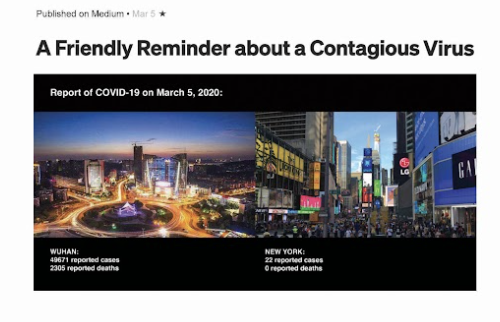
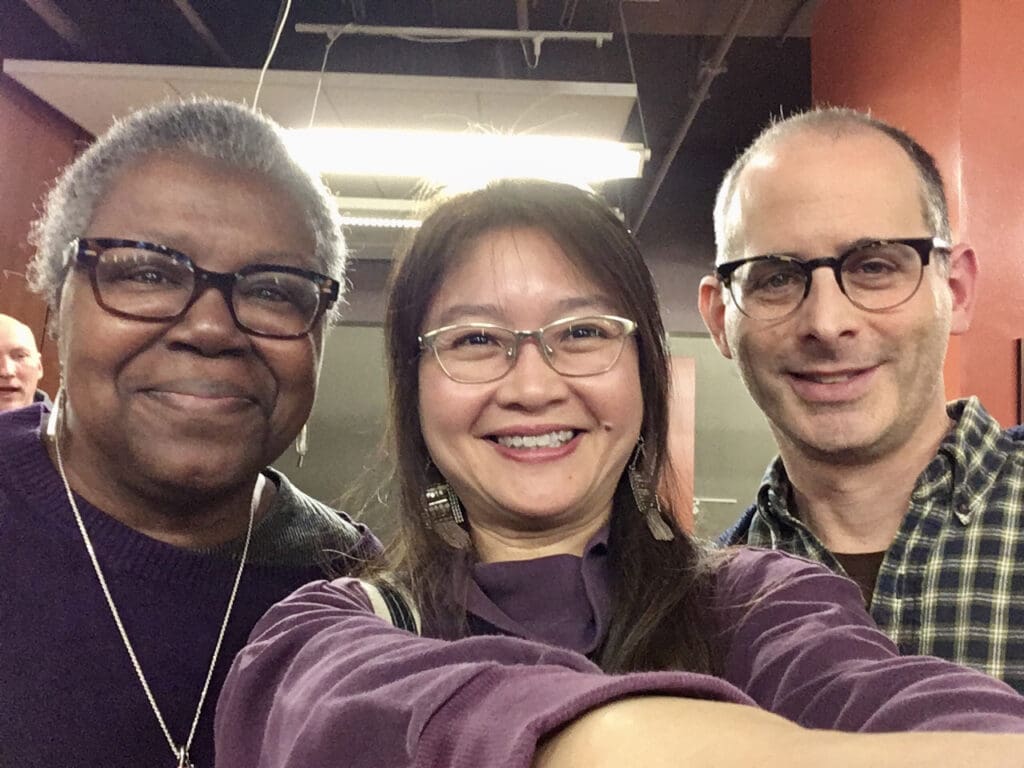
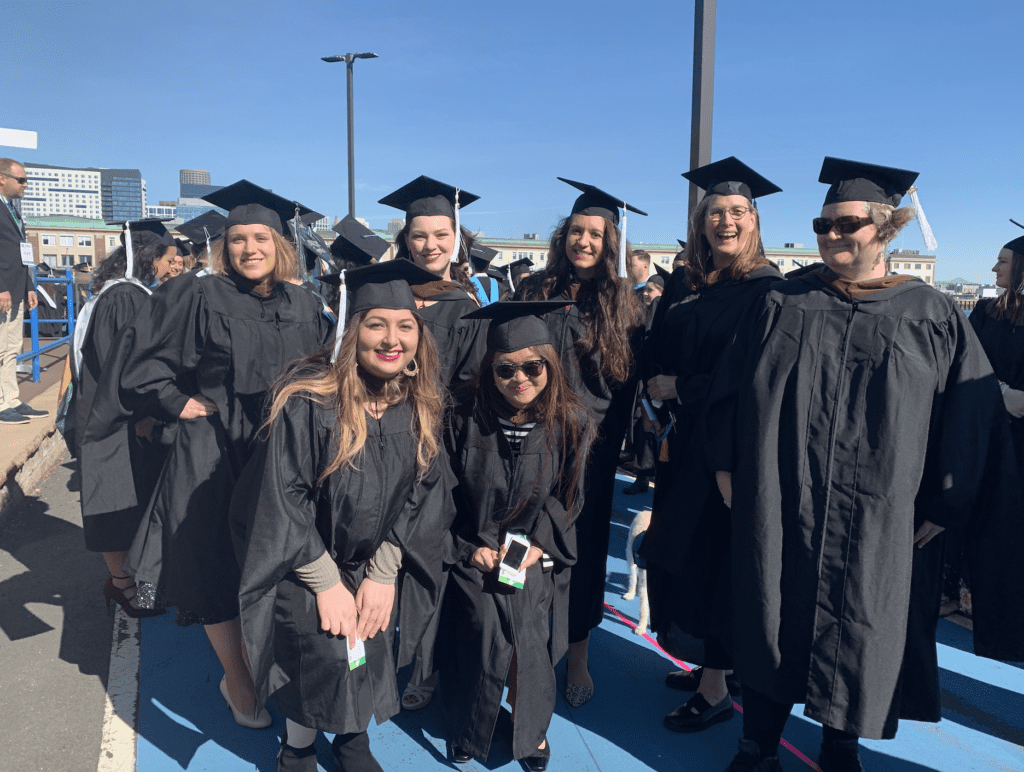
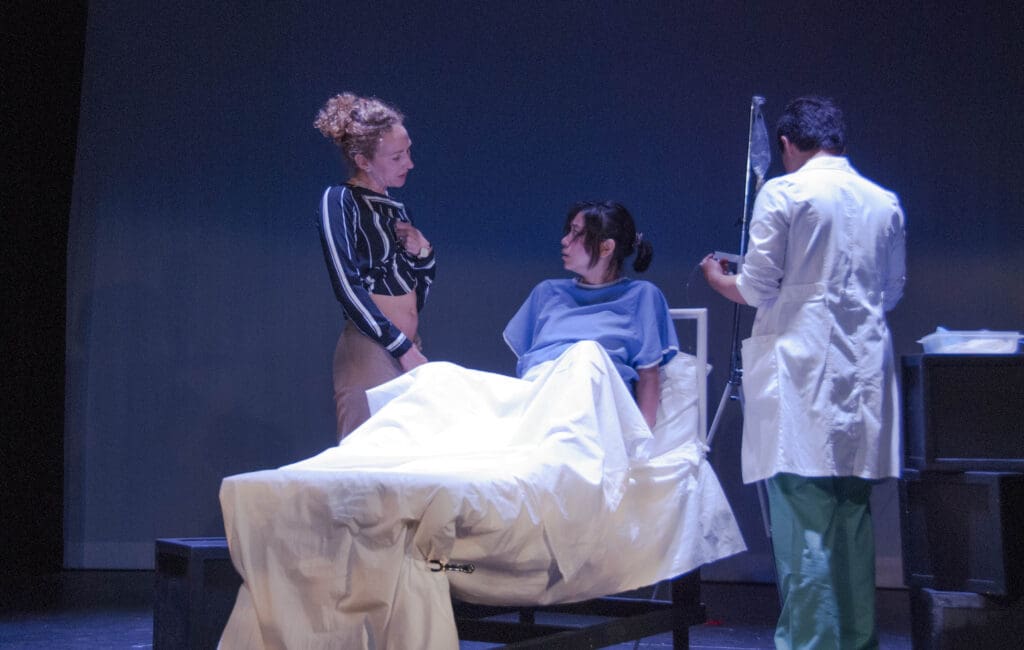
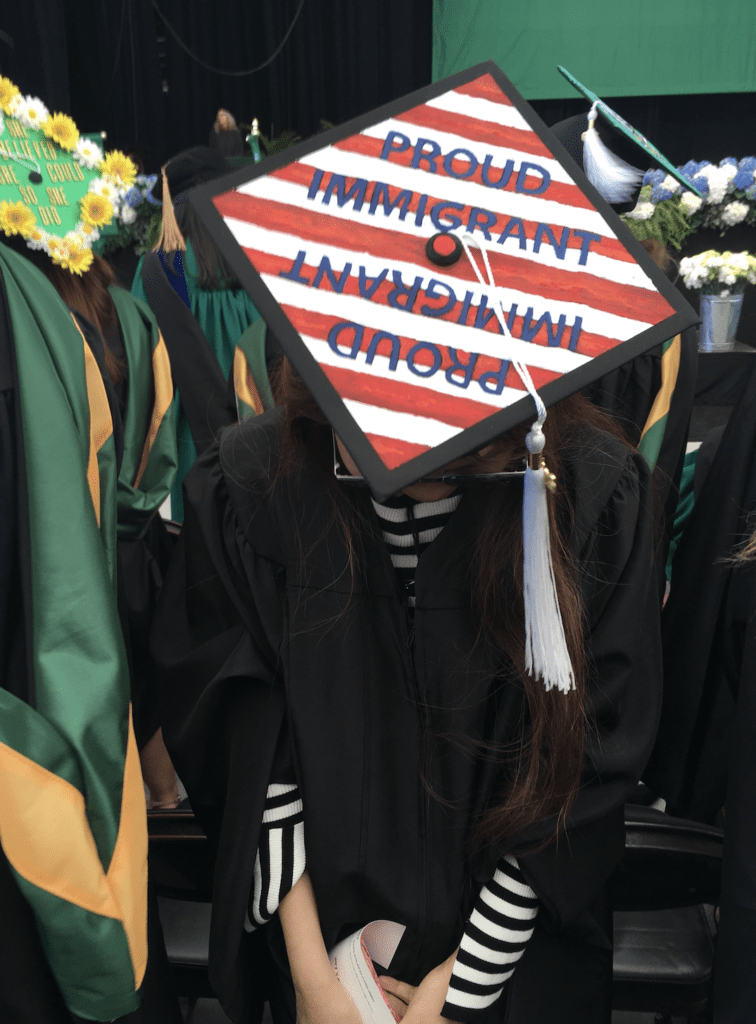

Comments are closed